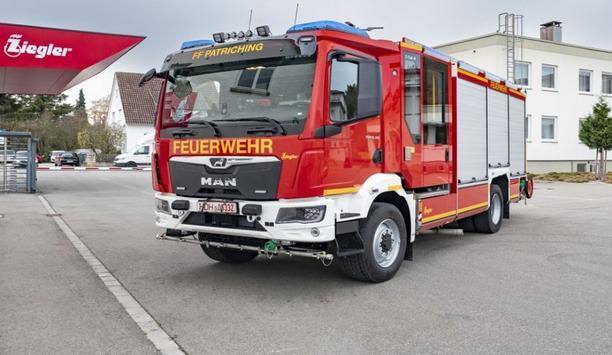In Australia, six main fire extinguishers can be installed on business premises. The different types of fire extinguishers in Australia are for different types of fire. For this reason, it is essential that Australian businesses have the right type of extinguisher installed in their workplace.
A Fire Service Technician, a Fire Certifier, is the best individual to help with the design to comply with AS2444 requirements. They can also assist with the Australian Standard for Fire Equipment Servicing Intervals, AS1851.
fire extinguisher service
AS1851 specifies fire extinguisher service gaps of 6 months, 12 months, and 5 years
AS1851 specifies fire extinguisher service intervals of six months, twelve months, and five years. Keep in mind that the rules vary when it comes to environmental elements and the location of fire extinguishers.
An FCF Fire Technician should come in and provide the best recommendations for the situation.
Classes of Fires
Fires are classified into various categories, each denoted by a letter, based on the type of fuel involved. The standard classes of fires include:
- Class A: Fires fueled by ordinary combustibles such as wood, paper, fabric, and plastics.
- Class B: Fires fueled by flammable liquids and gases, including gasoline, oil, and propane.
- Class C: Fires that involve electrical equipment, where the primary hazard is the conductivity of water-based extinguishing agents.
- Class D: Fires fueled by combustible metals, such as magnesium, sodium, or titanium.
- Class K: Fires related to cooking oils and fats, often found in commercial kitchens.
Choosing a suitable fire extinguisher means understanding the workplace's specific fire risks and ensuring they have the appropriate tools to address them. Consider the following factors:
- Fire Risk Assessment: Assess the potential fire risks in the workplace, considering the types of materials and equipment present.
- Location: Ensure that fire extinguishers are strategically inaccessible, with clear signage indicating their presence.
- Size and Capacity: Choose fire extinguishers with an appropriate capacity to handle potential fire incidents.
- Regular Maintenance: Schedule regular inspections and maintenance to ensure that the fire extinguishers are always in working condition.
There is no single type of fire extinguisher that is 100% effective against all forms of fires. So, before they buy fire extinguishers, make sure they know what kind of fire they'll be fighting.
Water Fire Extinguishers
- Water extinguishers are designed to combat Class A fires involving ordinary combustibles.
- They work by cooling the flames and removing the heating element from the fire triangle.
- They should not be used on flammable liquid fires (Class B) or electrical fires (Class C), as water conducts electricity.
Dry Chemical Fire Extinguishers
- Dry chemical extinguishers are suitable for Class A, B, and E fires.
- These extinguishers use a fine powder to interrupt the chemical reaction in the fire triangle.
- They are effective on a wide range of fires and are often found in industrial and commercial settings.
Carbon Dioxide (CO2) Fire Extinguishers
- CO2 fire extinguishers are effective for Class B and Class E fires.
- Carbon dioxide is a clean and non-conductive agent that displaces oxygen, suffocating the fire.
- These extinguishers are ideal for electrical fires, leaving no residue that can damage sensitive equipment.
Wet Chemical Fire Extinguishers
- Wet chemical fire extinguishers are specifically designed for Class F fires.
- Common in commercial kitchens where cooking oils and fats are involved.
- The extinguishing agent reacts with the cooking oil to form a soap-like solution, effectively extinguishing the fire and preventing reignition.
Fire Blankets
- Fire blankets are versatile tools for smothering small fires in their early stages, particularly Class F fires.
- They are often used in kitchen environments and can be used to wrap around a person whose clothing is on fire.
Australian Standard AS 1851:2012
The Australian Standard AS 1851:2012 serves as a silent but unwavering guide, ensuring that fire extinguishers remain more than just a mere presence on the wall. It demands that they are regularly inspected, meticulously cared for and promptly serviced.
From pressure checks to nozzle functionality, compliance with this standard is a testament to an extinguisher's readiness to combat the flames at a moment's notice.
Australia's diverse
Fire extinguishers are more than just tools; they're the unsung heroes that stand between disaster and safety
Fire extinguishers are more than just instruments; they're the unsung heroes that stand between potential disaster and safety. A fire extinguisher, when appropriately designed and maintained, is the initial line of defense against the unpredictable menace of flames. This is where the Australian Standard AS 1851:2012 steps in, laying down the blueprint for their care and upkeep.
As these unassuming yet indispensable devices stand sentry in Australia's diverse spaces, their alignment with the Australian Standard AS 1851 speaks volumes.
Final stage in firefighting
It signifies a dedication to safety, an unwavering promise that in the face of fire, there's a reliable defense at hand. In a land where fire is both a friend and a foe, the compliant fire extinguishers become an emblem of assurance, embodying the spirit of readiness and resilience.
Extinguishment is the final stage in firefighting. Firefighters utilize water streams blended with appropriate extinguishing agents to put out the residual flames. After that, the firemen begin salvaging the structure by removing smoke and water from the interior and protecting any materials that have not been harmed.















